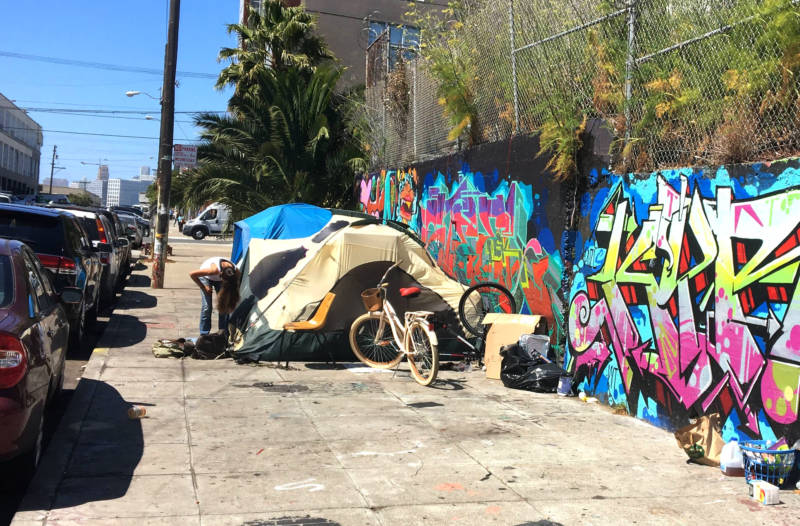The homeless populations in Alameda, San Francisco and Santa Clara counties grew considerably over the past two years, according to initial results from January's point-in-time counts, released Thursday.
Major Homeless Spikes Reported in San Francisco, Alameda and Santa Clara Counties

Alameda County reported the biggest increase — of 43% — since its last tally in 2017, with a total of 8,022 sheltered and unsheltered homeless people counted during a single day. That marks a jump of nearly 2,400 people in just two years.
In Santa Clara County, the home of Silicon Valley and one of the wealthiest regions in the country, homelessness grew by 31% since the 2017 count. The survey found more than 9,700 homeless people countywide, the largest unhoused population in the Bay Area. Of those, nearly 6,200 were located in San Jose, an increase of more than 1,800 in that city in two years.
In San Francisco, which has spent more than $300 million annually on a broad range of homeless prevention services, the increase was less dramatic, but striking nonetheless. The county reported a 17% uptick since its last single-night count, putting the homeless population at just over 8,000. That's the highest it's been since 2004, when then-Mayor Gavin Newsom launched an aggressive supportive housing effort to curb chronic homelessness.
On a more hopeful note, San Francisco and Santa Clara counties both reported dips in their veteran and youth homeless populations, although the decrease in youth homelessness was due, in part, to a change in survey methodology.
Although an imperfect measure, point-in-time homeless counts are mandated every two years by the U.S. Department of Housing and Urban Development, and the results have strong influence on local spending and policy decisions. In most counties, an army of volunteers are dispatched over the course of a single day or night (two days in Santa Clara) to tally every homeless person they see. Most Bay Area counties will release final reports with more detailed results, including demographic information, later this summer.
Officials in the three counties said they were disappointed, though not surprised, with the latest findings, a grim reminder of the region's severe shortage of affordable housing options.
"Obviously, we're deeply saddened by these numbers. And we know we need to do better," said Abigail Stewart-Kahn, an official for San Francisco's Department of Homelessness and Supportive Housing. "We also know that, to put context around this, this is a regional crisis. ... Mayor Breed is wisely proposing an increased investment in prevention and diversion, because for every one person that we exit from homelessness in San Francisco, three people are becoming newly homeless."
Santa Clara County officials noted a similarly challenging ratio of people entering and exiting homelessness.
“We have the resources to help people — even at that ratio — with health issues, drug and alcohol issues," said county Supervisor David Cortese. "What we don’t have is enough shelter."
Cortese said he had just attended a ribbon cutting for a new low-income housing development in Sunnyvale, one that received 3,500 applications for just 66 units.
"So that’s really what we’re looking at out here," he said. "As fast as we’re producing housing, we're still behind by about a 50-to-1 ratio. That’s a gap that needs to close.”
Officials in Alameda County also placed the blame squarely on the high rate of displacement and a deep shortage of affordable housing.
"Unfortunately, it wasn’t a surprise," said Doug Biggs, executive director of the Alameda Point Collaborative, a supportive-housing program. "For every two people becoming homeless, we only have the resources to be able to house one of them."
A board member of EveryOne Home, the agency that conducted the county's point-in-time survey, Biggs said the county spends roughly $100 million annually on supportive housing and other homeless prevention services, but noted that it needs to spend closer to three times that amount to get people off the street permanently and prevent more people from becoming homeless in the first place.
“I'm fearful people are going to look at the numbers [by] themselves and feel numb to it," Biggs said. "You really need to look beyond the numbers and look at the people those numbers represent. It's deplorable that we have 8,000 community members living out there.”
Hope McKenney contributed to this report.